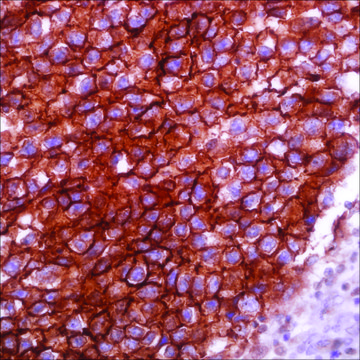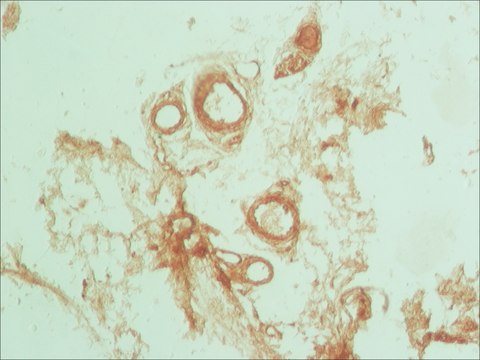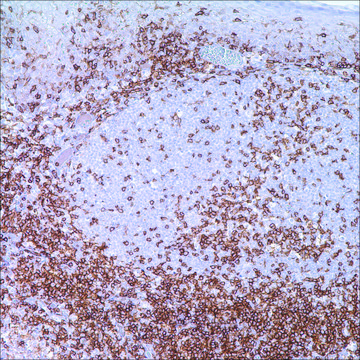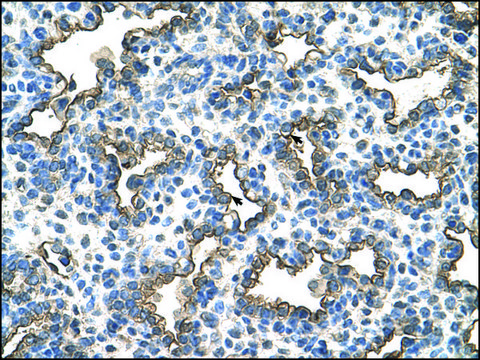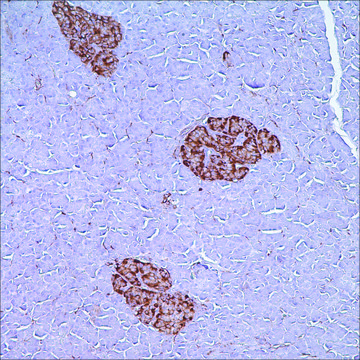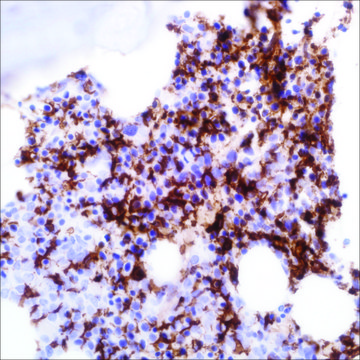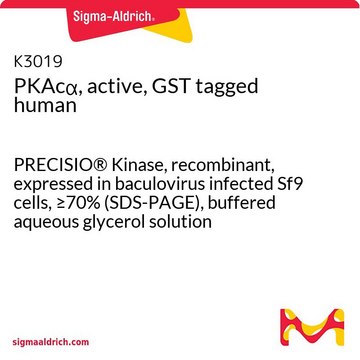MABT850M
Anti-Podoplanin Antibody, clone PMab-2
clone PMab-2, from mouse
Synonym(s):
E11 antigen epitope, Glycoprotein 38, Gp38, OTS-8, RTI140, T1-alpha, T1A, Type I cell 40 kDa protein
About This Item
Recommended Products
biological source
mouse
Quality Level
antibody form
purified immunoglobulin
antibody product type
primary antibodies
clone
PMab-2, monoclonal
species reactivity
rat
packaging
antibody small pack of 25 μg
technique(s)
ELISA: suitable
flow cytometry: suitable
immunohistochemistry: suitable (paraffin)
western blot: suitable
isotype
IgG1κ
UniProt accession no.
target post-translational modification
unmodified
General description
Specificity
Immunogen
Application
Flow Cytometry Analysis: A representative lot detected Podoplanin in Flow Cytometry applications (Oki, H., et. al. (2015). Monoclon Antib Immunodiagn Immunother. 34(6):396-403).
Western Blotting Analysis: A representative lot detected Podoplanin in Western Blotting applications (Oki, H., et. al. (2015). Monoclon Antib Immunodiagn Immunother. 34(6):396-403).
Immunohistochemistry Analysis: A representative lot detected Podoplanin in Immunohistochemistry applications (Oki, H., et. al. (2015). Monoclon Antib Immunodiagn Immunother. 34(6):396-403).
ELISA Analysis: A representative lot detected Podoplanin in ELISA applications (Oki, H., et. al. (2015). Monoclon Antib Immunodiagn Immunother. 34(6):396-403).
Quality
Immunohistochemistry Analysis: A 1:250 dilution of this antibody detected Podoplanin in rat kidney tissue sections.
Target description
Physical form
Other Notes
Not finding the right product?
Try our Product Selector Tool.
Storage Class Code
12 - Non Combustible Liquids
WGK
WGK 1
Flash Point(F)
Not applicable
Flash Point(C)
Not applicable
Certificates of Analysis (COA)
Search for Certificates of Analysis (COA) by entering the products Lot/Batch Number. Lot and Batch Numbers can be found on a product’s label following the words ‘Lot’ or ‘Batch’.
Already Own This Product?
Find documentation for the products that you have recently purchased in the Document Library.
Our team of scientists has experience in all areas of research including Life Science, Material Science, Chemical Synthesis, Chromatography, Analytical and many others.
Contact Technical Service